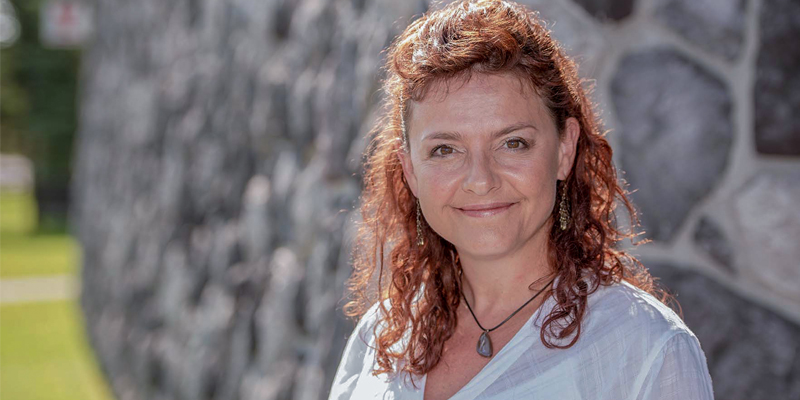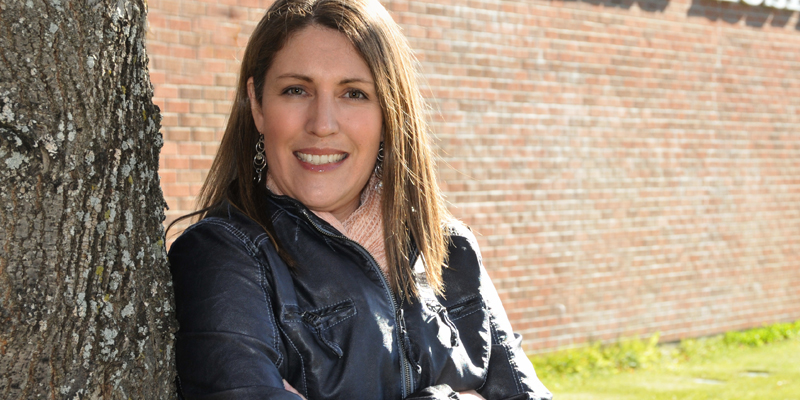Practise in the North makes perfect

NOSM docs heed the call—and they’re loving it
There are so many reasons to live and work in Northern Ontario, but practising to the fullest scope of her training is a source of great interest and pride for at least one NOSM graduate.

“I get to do everything,” says Dr. Nicole Ranger (MD 2016, Family Medicine 2018), Assistant Professor at NOSM University and a practising family physician in Hearst. “You can practise to the full extent of your knowledge. It’s the most interesting, challenging and rewarding experience.”
When Dr. Ranger started out in 2016 as a newly-minted Francophone physician, she decided it would be best if she first got a taste for family practice in Hearst. After she completed a few longer-term locum experiences, she made a commitment to stay.
“When I finished my clerkship, I was the first NOSM rural resident to come to Hearst. I locumed here for two-and-a-half years before making the decision to work here full-time.”
Dr. Stacy Desilets has always known what rural life is like in the North. She grew up in Englehart, in the Temiskaming District. After her MD and then her residency in North Bay, she decided to start practising in New Liskeard. Dr. Desilets, now an Associate Professor at NOSM University, has been working in the community for 13 years.
“During the pandemic I’ve seen urbanites move more rural and love it,” she says. “I grew up with the outdoors: I fish, I hunt and I love being part of the community I practise in. It doesn’t bother me when people stop me outside of the clinic to ask a medical question. I love being involved in this community and I love the outdoor lifestyle.”
Rural physicians across Northern Ontario swap stories about being able to paddle, hike, run, wakeboard, surf, fat bike or ski while on-call or between shifts.
And while a rural physician’s practice may seem smaller than the average urban family physician’s, rural doctors are managing complex patients with limited specialty support. On average, patients in the North have higher rates of chronic illness than the rest of Ontario. As one rural family physician recently tweeted, “I often hear about how family docs only deal with one issue per visit. I just finished a note on a 70-year-old woman with seven issues including diabetes…this is very common.”
“For example, in Barrie a family physician might roster 1,500 patients,” says Dr. Desilets. “Most of us roster 700-900, limiting the size of our practice to ensure we can provide detailed care and treatment. There are no specialists here, so there are fewer options for referrals. For a lot of patients, it’s one-stop for care.”

“In the last few years when patients move here from the south, they say they’re surprised we don’t have specialists and that I’m doing all of it,” says Dr. Desilets. “I really enjoy working at my full scope, it’s very satisfying.”
There are also specific incentives for locums and physicians who practise in rural Northern Ontario communities—incentives that don’t exist elsewhere in Canada.
“The truth is that there are some significant financial benefits through Health Force Ontario’s locum program,” says Dr. Desilets. “There are also other incentives that the Ministry of Health offers to those who come to work in a rural community and it can be lucrative—you can live a good quality of life here providing family medicine here.”
Local Education Groups (LEGs) in Northern Ontario provide specified funding for mentorship, which is unique to Northern Ontario. The LEGs are self-organized groups of NOSM clinical faculty who offer medical education to both MD students and resident doctors. They also support and foster other academic activities, including professional development, research and clinical innovation.
“For new recruits, it’s a valuable opportunity and a huge benefit,” says Dr. Desilets.
NOSM graduates who are now rural generalists are finding themselves in positions of academic leadership at NOSM University. Many are in faculty roles, teaching the incoming generation of physicians.
“There are even more opportunities in medical academics and research that also don’t exist elsewhere because the school is close-knit and small, you don’t have to have a PhD to get involved in academics,” says Desilets. She says doctors in Northern Ontario enjoy more encouragement and support when it comes to including research and teaching in clinical practice.
Dr. Ranger says that she and the medical community in Hearst are very engaged and happy to take on local learners because, in return, students share the most recent approaches to care. There’s also a strong connection between NOSM University alumni.
“Having residents, especially those like Dr. Shyanne Fournier [MD 2021, currently completing her first year of family medicine residency] is extraordinary. She’s from here, she’s Francophone, and she knows the community, and she’s learning from local NOSM charter class graduate, Dr. Lianne Gauvin.”
“We find it very rewarding to teach,” says Dr. Ranger. “For as much as we facilitate learning, the learners facilitate our learning—you gain fresh perspectives, new eyes on different areas of medicine, the latest training and it’s mutually beneficial for us. It’s an inviting, open environment and allows everyone to supplement their learning with strong experiences.”
Experienced NOSM alumni who practise across the region suggest giving rural and remote medicine a try. If you’re passionate about family medicine, consider a trial run of a few months or one year—you may be pleasantly surprised. They say it could be your most fulfilling option.
